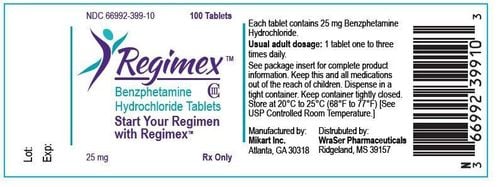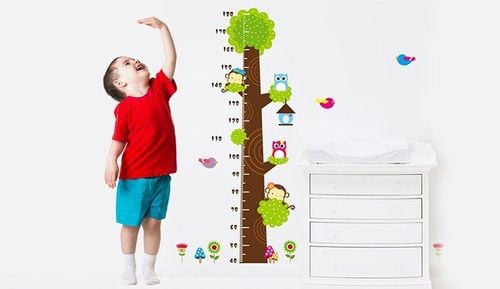This is an automatically translated article.
The article is professionally consulted by Master, Doctor Nguyen Thi An - Pediatrician - Neonatologist - Department of Pediatrics - Neonatology - Vinmec Ha Long International General Hospital.The growth chart consists of a series of percentage curves illustrating changes in a child's body measurements. In the United States, growth charts in children have been used by pediatricians, nurses, and parents to track the growth of infants, children, and adolescents since 1977.
1. What can a baby's growth chart tell us?
A baby's growth chart can give you a general picture of your baby's physical development. By comparing your baby's weight, height and head circumference measurements with those of other children of the same age, sex and with similar measurements from previous tests. Through the test results, the doctor will determine if the baby is developing in a healthy way.Although the current growth charts are vastly improved over the previous ones, they are not a must-have for children. Therefore, parents should not worry too much about the percentage of children.
The most important thing is that the child is growing at a steady, time-appropriate rate, not that the child is growing in line with the general growth charts of other children.
The US Centers for Disease Control (CDC) recommends that doctors use the World Health Organization (WHO) charts for the first 24 months of a baby's life. The measurements in the WHO chart are based on breastfed infants and infants whose length is measured when they are lying down. After age 2, doctors often use CDC growth charts, which are similar but based on different data.
Charts from both organizations show length in inches and centimeters, and weight in pounds and kilograms. Both charts also use percentages, which compare the averages of children broken down by age.

Biểu đồ tăng trưởng của trẻ cung cấp cho bạn một bức tranh tổng quát về sự phát triển thể chất của bé
2. What does "percent" in growth chart mean?
This is easiest to explain by example. If your 3-month-old daughter is in the 40th percentile for weight, that means 40% of 3-month-old girls are at or below her weight and 60% of 3-month-old girls are heavier little.The higher the percentage, the bigger the baby is compared to other babies of the same age. If your baby is in the 50th percentile for height, that means he or she is average height for age.
3. Is the child only in the 25th percentile of the growth chart to worry about?
Percentages in growth charts are not the same as school grading. A lower percentage doesn't mean there's anything wrong with the child.Assume both parents are shorter than average and the child grows up to be the same size as the parents. It is completely normal if your baby always ranks 10th in height and weight when growing up.
It is important to remember that the doctor is monitoring how the baby is growing, not just what percentage the child is achieving.
Newborns tend to grow rapidly in the early stages, during which time they may gain a little more weight or height. In the following months, babies may develop only a fraction of what they were before. Your doctor will note individual peaks and depressions in your child's growth chart, but will focus more on the overall growth pattern.
4. When should you worry about your child's development?
A baby's growth chart can make you nervous if your baby's percentile changes dramatically. For example, if your baby is consistently around the 50th percentile for weight and then suddenly drops to the 15th, your doctor will need to find out why. There may be a medically related reason for the change that needs further evaluation.A mild illness or a change in your baby's eating patterns may cause your baby to lose less, in which case the doctor may just monitor your baby's growth more closely for a while.
If the baby is not sick but weight gain is slow while still growing in height, the doctor may suggest increasing the number of feedings. You may need more frequent visits to make sure that your baby is starting to gain weight back to normal. However, there are times when rising or falling faster than usual is a good thing. For example, if the child is underweight, it can be a good sign that the child is growing in height a little faster.
Also, growth is not always a cause for concern. For example, if the child is very short and both parents are relatively short, it is perfectly appropriate for the child to be as low as 5%. But if the child is very short and both parents are of average height or more, or if the child is very slim and both parents are of average weight or more, then the doctor will need to check for problems. What about child development? Like hormone deficiency or genetic problem.
In addition, if the child is in the top 5% of weight, the doctor will monitor the child's growth and can advise you on feeding, to make sure the child is not obese.
If the baby's head circumference measurement is much smaller than average, the doctor needs to check to make sure that the baby's brain is growing and developing normally, as the baby's brain development is reflected in skull size. If a child's head circumference is much larger than average, he or she will be further evaluated to make sure he doesn't have excess cerebrospinal fluid in his brain, a condition called hydrocephalus.

Nếu chu vi vòng đầu của trẻ lớn hơn nhiều so với mức trung bình, trẻ sẽ được đánh giá thêm để đảm bảo rằng trẻ không bị não úng thuỷ
5. Does birth weight affect a baby's future growth?
Birth weight seems to be less important than you think, in a baby's development. It's not the birth weight, but the genes that determine adult size.Babies that are small at birth sometimes grow faster, and babies that are larger at birth may become smaller over the years.
A child's parents are the best indicator to compare a child's development. Most likely, the child will grow and most likely, the child will also reach the same height and weight as their parents when they become adults.
In case if you monitor the child's height and weight and see abnormalities such as: slow weight gain, limited height growth, fast weight gain... you can take your baby to the International General Hospital Vinmec to be examined by a pediatrician or nutritionist, giving specific assessments of the baby's current condition.
Children need to supplement with enough zinc to eat well, reach the correct height and weight and exceed the standard. Zinc plays a role in affecting most biological processes taking place in the body, especially the breakdown of nucleic acids, proteins... Organs in the body when zinc deficiency can lead to a There are a number of diseases such as neurological disorders, irritability, etc. Therefore, parents need to learn about the role of zinc and guide them to appropriate zinc supplements for their children.
In addition to zinc, parents also need to supplement their children with other important vitamins and minerals such as lysine, chromium, B vitamins,... errands.
Please regularly visit Vinmec.com website and update useful information to take care of your baby and family.
Source: babycenter.com - cdc.gov













